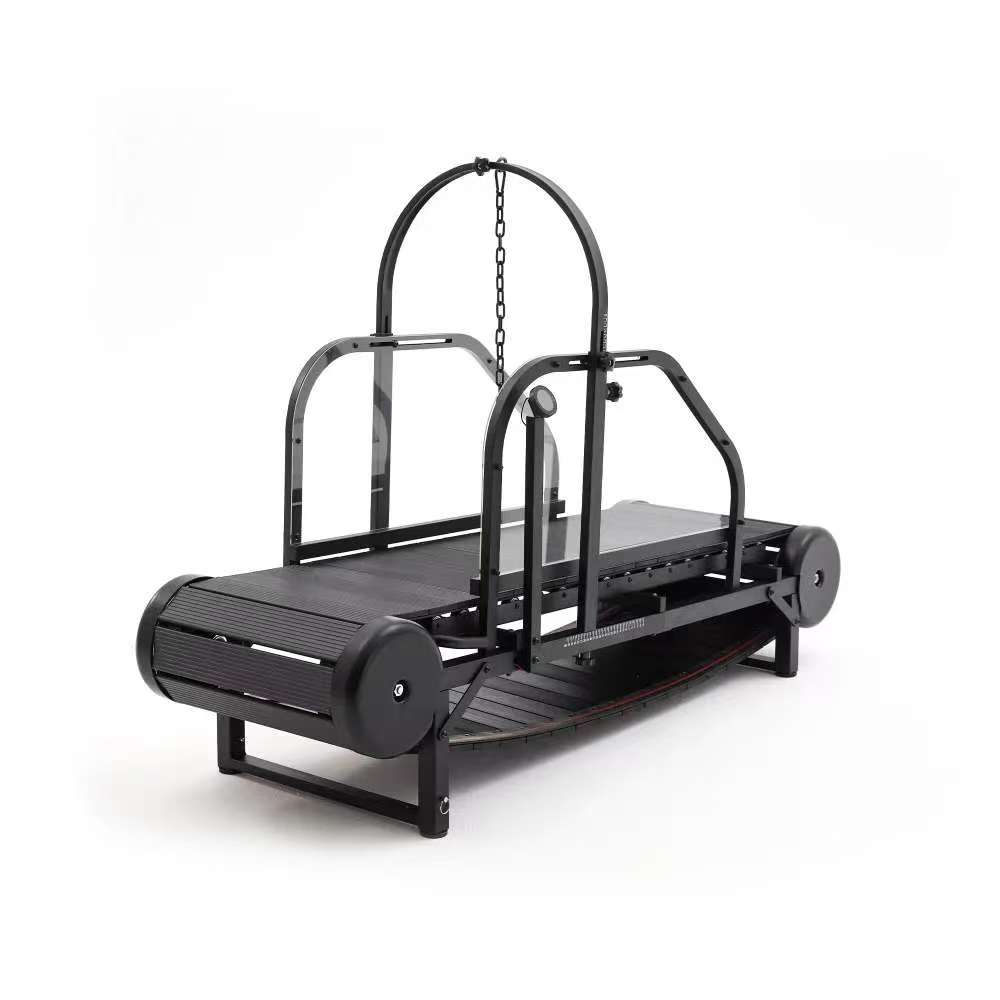Bernese Mountain Dogs, with their majestic appearance and gentle demeanor, have captured the hearts of dog lovers around the world. However, beneath their charming exterior lies a concerning health issue - a high susceptibility to hip arthritis. Understanding why these beloved dogs face this risk is crucial for their well - being, and it also highlights the importance of a proper exercise routine. In this blog, we'll delve into the reasons behind the high risk of hip arthritis in Bernese Mountain Dogs and explain why investing in a treadmill can be a game - changing solution to support their joint health and overall fitness.

Genetic Predisposition to Hip Arthritis
Genetics play a major role in the high incidence of hip arthritis in Bernese Mountain Dogs. Hip dysplasia, a common precursor to hip arthritis, is an inherited condition that affects many large - breed dogs, including Bernese Mountain Dogs. In hip dysplasia, the hip joint doesn't develop properly, resulting in an improper fit between the thigh bone and the hip socket. This abnormal joint structure causes the bones to rub against each other instead of moving smoothly, leading to inflammation, pain, and eventually, the deterioration of the joint cartilage.
Studies have shown that a significant portion of Bernese Mountain Dogs carry the genes associated with hip dysplasia. In fact, according to research from canine health organizations, approximately 25 - 35% of Bernese Mountain Dogs may be affected by hip dysplasia to some degree. This genetic predisposition means that even with the best care, many Bernese Mountain Dogs are at a higher risk of developing hip arthritis as they age.
Symptoms of Arthritis
Noticing the early signs of arthritis in your Bernese Mountain Dog is very important for their health. Here are some signs to look out for:
-
Stiffness or Limping: Your dog might limp, especially after resting or when it's cold.
-
Difficulty Moving: Your Bernese may have trouble standing, climbing stairs, or jumping on furniture.
-
Swollen and Warm Joints: Watch for any swelling or warmth around their joints, which can mean inflammation.
-
Altered Gait: Look for changes in how your dog walks, like bunny-hopping or limping on one leg.
-
Behavioral Changes: Notice if they don’t want to play or exercise, seem irritable when you touch their joints, are more tired than usual, or lick their joints a lot.
These signs can show up before a vet diagnoses arthritis. Many owners think these signs are just part of getting older. But spotting them early is very important. It helps get your dog to the vet sooner, which can slow down arthritis and make their life better.
As arthritis gets worse, you might see more serious signs in your Bernese Mountain Dog:
-
Increased Stiffness: Your dog may feel stiffer, especially after resting.
-
Visible Discomfort: You might notice your dog seems to be in pain when they move or try to climb stairs.
-
Joint Swelling: In bad cases, swelling around the joints can get worse.
-
Reluctance to Move: Your dog may not want to do physical activities they used to love.
Things like age, being overweight, and past joint injuries can make arthritis worse. Regular vet visits, including check-ups and imaging, can help see how bad the joint damage is. Managing arthritis often focuses on easing pain and helping joint function with supplements, weight control, physical therapy, and other treatments like laser and hydrotherapy.
By being alert and taking action, you can help your Bernese Mountain Dog have a better life even with arthritis.
Preventive Care and Exercise

Importance of Exercise
Regular exercise is very important for Bernese Mountain Dogs. It helps keep them healthy and stops joint problems like arthritis. Physical activity makes their muscles strong and helps their joints stay stable. When you give your Bernese regular exercise, it helps them stay at a healthy weight. This reduces stress on their joints.
Here are some benefits of regular exercise for your Bernese:
-
Weight Management: Keeping your dog at a healthy weight stops extra strain on their joints.
-
Muscle Strength: Strong muscles help joints and make moving easier.
-
Mental Stimulation: Exercise keeps their mind busy, which stops boredom and bad behaviors.
-
Social Interaction: Activities like walking or playing with other dogs improve social skills and lower anxiety.
Adding joint-friendly exercise to your Bernese's routine can really help their quality of life. Try to mix activities that fit their energy levels and physical abilities.
Why Bernese Mountain Dogs Need to Buy Dog Treadmill
Controlled and Low - Impact Exercise
A treadmill offers a controlled environment for Bernese Mountain Dogs to exercise. The cushioned surface of the treadmill belt provides a low - impact exercise option compared to running on hard pavement or rough outdoor terrain. This reduced impact is extremely beneficial for their already vulnerable hip joints. Owners can set a consistent and appropriate speed for their dogs, ensuring that the exercise is neither too strenuous nor too light. This controlled exercise helps to strengthen the muscles around the hips without over - stressing the joints, making it an ideal form of physical activity for Bernese Mountain Dogs at risk of hip arthritis.
Customizable Exercise Routine
With a treadmill, owners have the flexibility to create a customized exercise routine tailored to their Bernese Mountain Dog's specific needs. For younger dogs with relatively healthy hips, the speed and duration of the treadmill sessions can be gradually increased to build endurance and muscle strength. For older dogs or those already showing signs of hip arthritis, the exercise can be adjusted to be more gentle, with slower speeds and shorter durations. Some treadmills also come with incline adjustment features, which can be used to add variety to the exercise and target different muscle groups in a controlled manner, further enhancing the benefits for joint health.
Consistent Exercise Despite External Factors
Weather and environmental conditions can often disrupt a dog's exercise routine. Rain, snow, extreme heat, or cold can make outdoor exercise difficult or even dangerous for Bernese Mountain Dogs. A treadmill eliminates these barriers, allowing owners to ensure that their dogs get regular exercise regardless of the weather outside. This consistency is crucial for maintaining joint health and overall fitness. Whether it's a blizzard outside or a sweltering summer day, the treadmill provides a reliable way to keep Bernese Mountain Dogs active and healthy.
By focusing on exercise and using tools like treadmills, you can help your Bernese Mountain Dog stay active while lowering the risk of arthritis.
Tips for Using Doggo Treadmills for Bernese Mountain Dogs

Introducing the Treadmill
Introducing a Bernese Mountain Dog to the treadmill should be a gradual process. Start by turning off the treadmill and allowing your dog to sniff and explore it. Once they seem comfortable, turn on the treadmill at the lowest speed and encourage them to step on using treats and positive reinforcement. Begin with very short sessions, just a few minutes at a time, and gradually increase the duration as your dog becomes more accustomed to the treadmill. It's important to be patient during this process, as large dogs like Bernese Mountain Dogs may take some time to adjust to the new exercise equipment.
Supervision and Maintenance
Always supervise your Bernese Mountain Dog while they are on the treadmill. Even with safety features, accidents can still occur, especially if the dog loses its balance or becomes distracted. Watch for signs of fatigue, discomfort, or any abnormal behavior, and stop the treadmill immediately if necessary. Regular maintenance of the treadmill is also essential. Check the belt for signs of wear and tear, lubricate it as per the manufacturer's instructions, and ensure that all components are in good working condition. A well - maintained treadmill not only provides a safe exercise environment but also ensures its longevity.
In conclusion, knowing the health risks for Bernese Mountain Dogs is very important for their well-being. These dogs have serious challenges, like a high chance of joint problems and cancer. Taking care of their health can really help. Regular exercise, a good diet, and finding health issues early can improve both the quality and length of your dog's life.

Here’s a quick look at some key health statistics:
|
Key Health Statistic/Fact |
Details |
|---|---|
|
Average Lifespan |
6-10 years, shorter than average because they are large |
|
Cancer Incidence |
Up to 50% of Bernese Mountain Dogs may die from some type of cancer |
|
Importance of Early Detection |
Cancer is often deadly; finding it early is very important |
|
Joint Issues |
High rates of hip and elbow dysplasia because of their size |
|
Osteoarthritis Risk |
Very high risk; regular checks on mobility are suggested |
|
Preventative Measures |
Healthy diet, regular exercise, early joint supplements (starting before age 8) |
|
Goal of Proactive Management |
Improve quality and length of life by watching and dealing with these health issues |
By staying informed and taking action, you can help your Bernese Mountain Dog live a healthier, happier life.










0 Comments